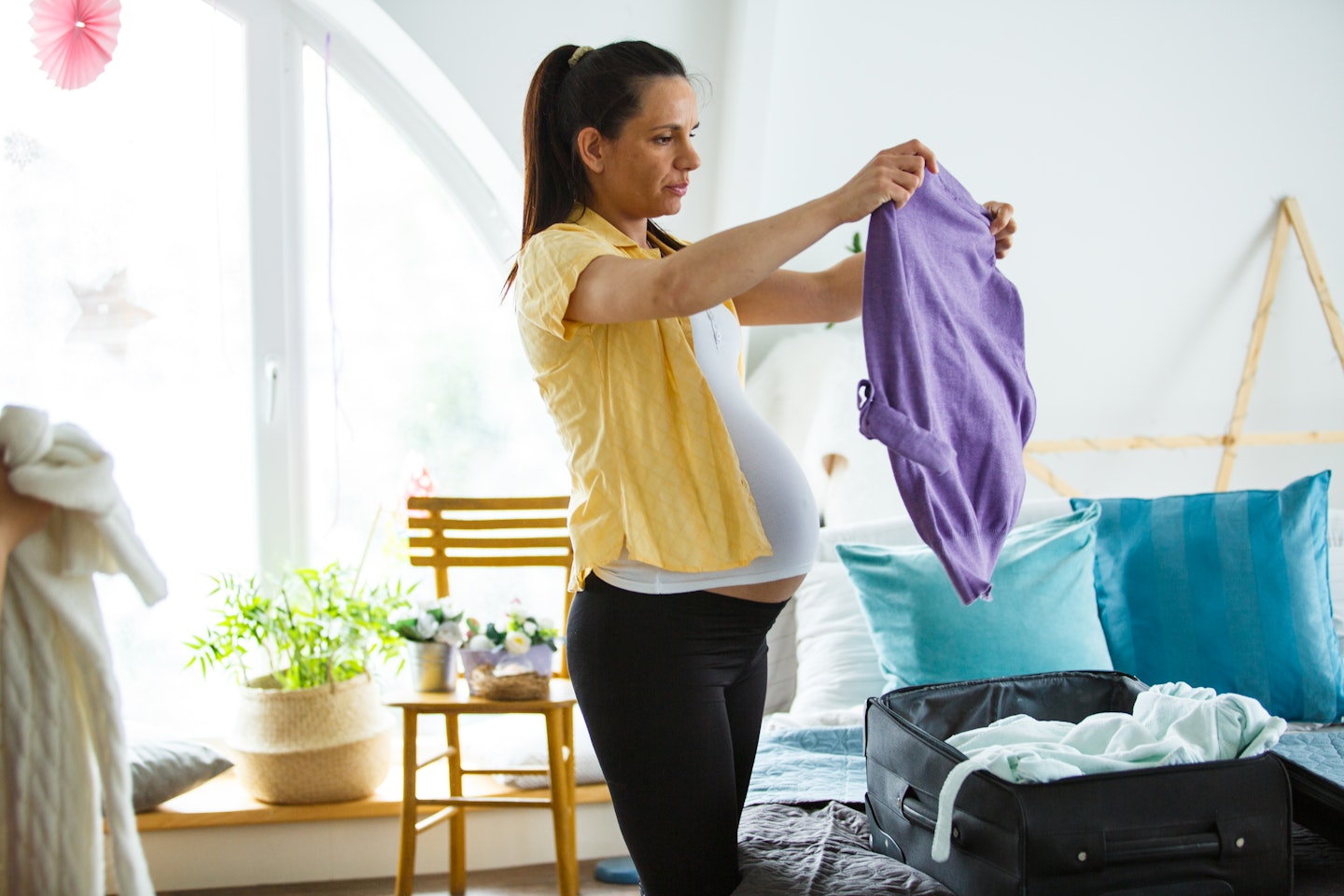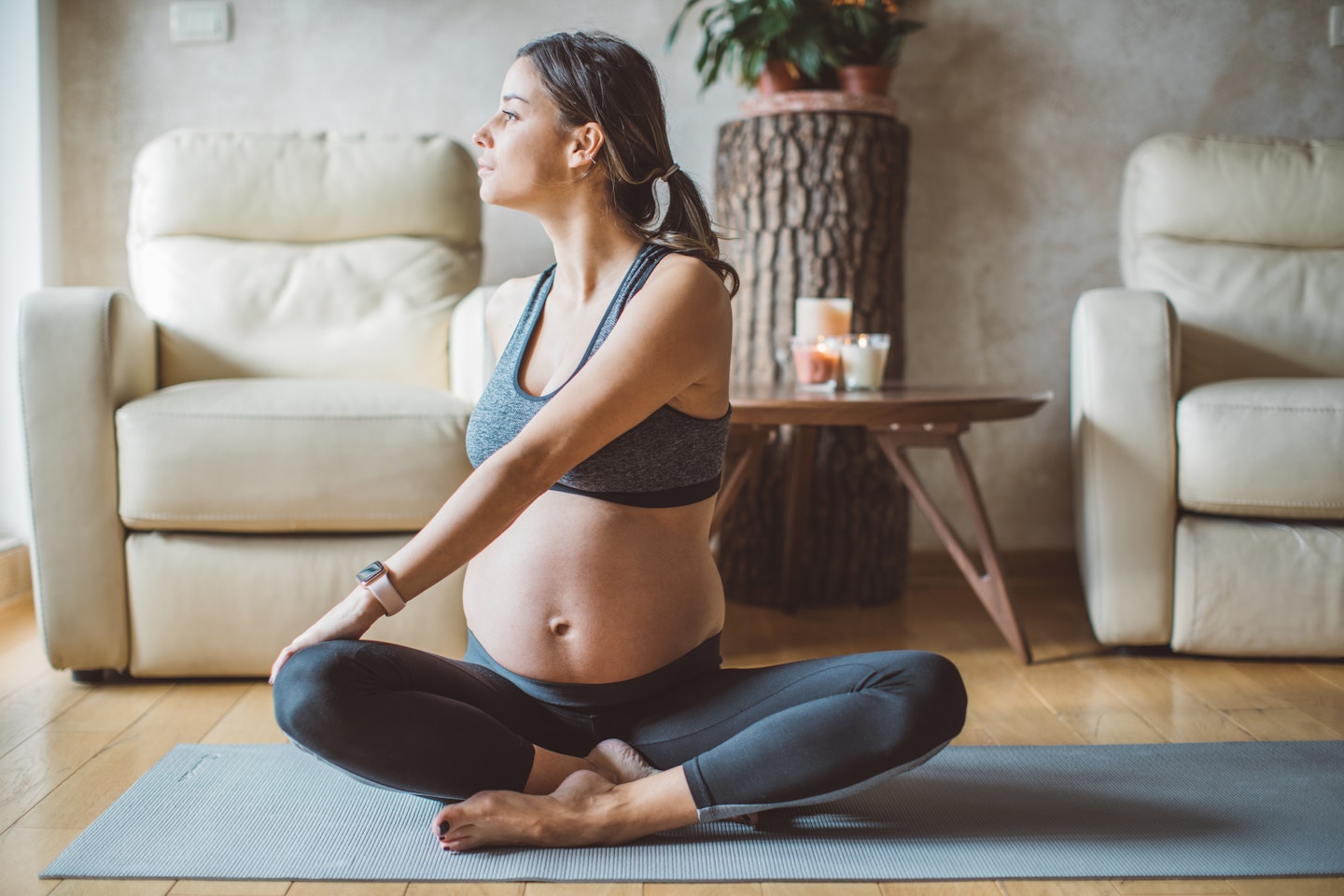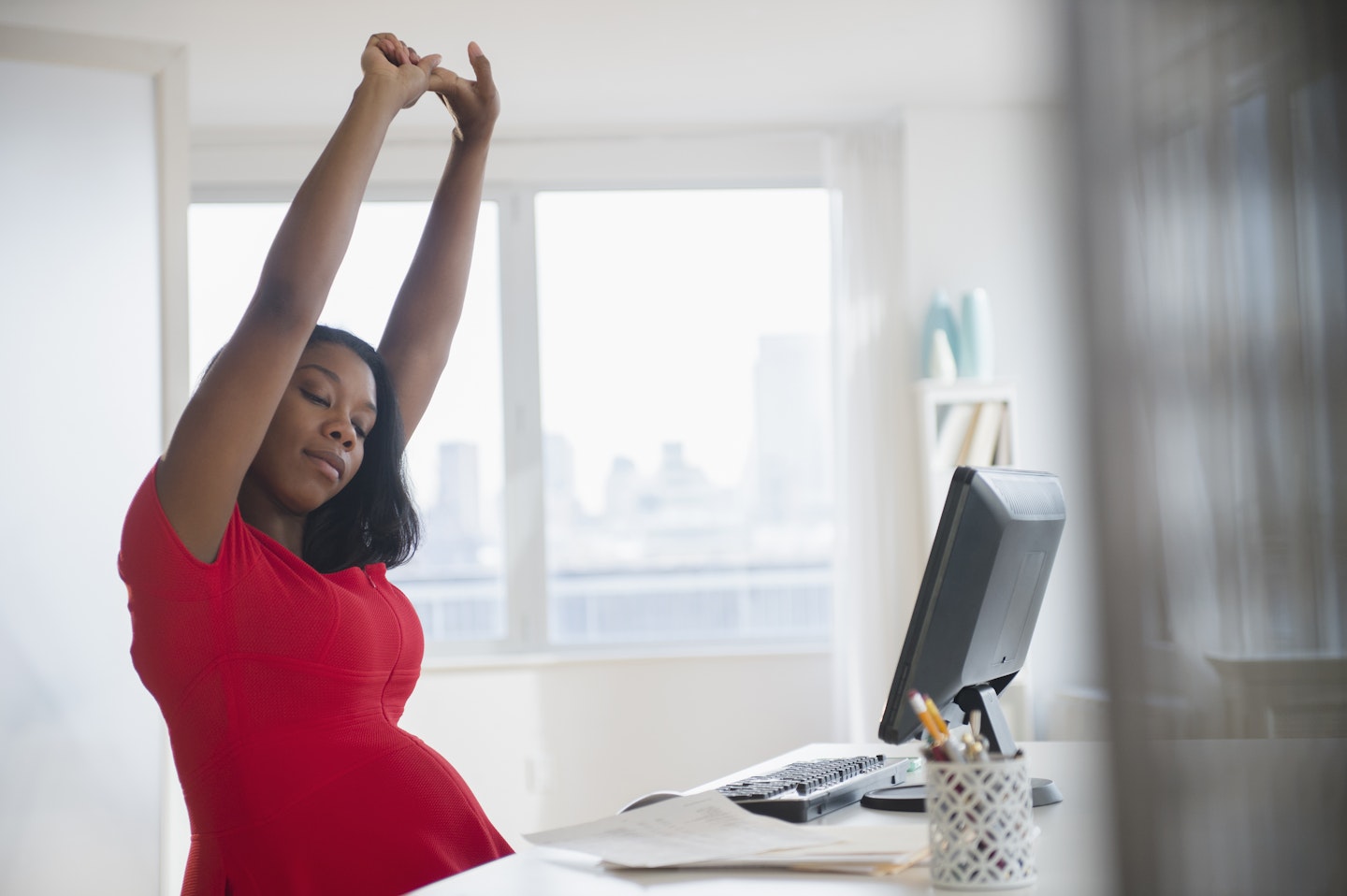THIS PAGE IS SPONSORED BY LANSINOH.
With your baby’s due date fast approaching, chances are you’re feeling a little apprehensive; the mother of new-job nerves – pun fully intended! And that’s totally normal. The thought of going into labour, and bringing your baby safely into the world, can feel overwhelming. But believe us when we say, it can also be a magical and truly life-changing moment.

What’s more, there are loads of simple things you can do now to prepare both your body and your mind for the big day. ‘We all know how we feel when we’ve got a presentation at work or a big event coming up,’ says Marie Louise, a midwife for eight years, author of The Modern Midwife's Guide to Pregnancy, Birth and Beyond and expert for Biamother. ‘If you’re unprepared, you can feel worried and anxious. And the same goes for labour. When I speak to pregnant women to reassure them, I like to separate the mental and physical aspect of preparing for birth. I find that really helps them break down the thought of being in labour in their minds.’
Related: What will my baby look like?
Get your baby into position
Marie has worked with hundreds of mums-to-be and says one of the best ways to prepare your body for labour is to get your baby ready! ‘Your baby’s position plays a key part in you having a quicker and more comfortable labour,’ says Marie. ‘From 34 weeksyou can ask your midwife what position your baby is in. Ideally, you want your baby to be looking towards your spine and to have as much space as possible in the front of your pelvis. This position is called “occiput anterior” and basically means the smallest part of your baby’s head will come through the pelvis first.’
To get your baby into this prime position, start with one thing: gravity. ‘The heaviest part of the baby is actually that part of their head,’ says Marie. ‘If you keep your knees lower than your hips it really helps it to come forward first, because gravity is on your side.’
To get the most impact, simply tweak the way you are sitting. If you have a job where you spend a lot of the day seated, Marie recommends sitting on a birth ball, which will help get you into an upright, forward and open – the ‘UFO’ position. But if an office birth ball is a no-no, there is another solution.
‘Sometimes chairs, especially if you’re a bit shorter, mean you end up sitting in a position where your knees are actually higher than your hips,’ says Marie. ‘So sitting on top of something that tilts your pelvis will help. Even popping a cushion under your bottom will tilt and raise your pelvis up above your knees.’ These little things we do every day without thinking can make such a big difference.
And when you’re pregnant and still working, it’s easy to slouch on the sofa the minute you’re through the front door. But consider sitting on your birth ball in front of the TV, instead. ‘Or go on all fours in front of your favourite show for 10 minutes,’ says Marie. ‘You could also try kneeling up and putting your arms over your coffee table for the same amount of time. Another good position is simply standing. But only do this if you’re feeling up to it. UFO is a great way of getting your baby into the right position.’
Want to combine your labour prep with getting active? Then head to the pool. ‘Swimming is brilliant for getting your baby into position,’ says Marie. ‘If you don’t have symphysis pubis dysfunction (SPD) or pelvic girdle pain then do breaststroke. But if you’re suffering from either, just use a float and stretch your legs out behind you, instead. As you do this, the back of your baby’s head will gravitate around towards the front.’
Give pregnancy yoga a go
An easy way to prepare your mind for labour, and reduce any anxiety around it, is by doing pregnancy yoga. There’s loads of research to prove its benefits, including a 2018 study by the Journal of Obstetrics & Gynaecology Researchwhich found that practicing yoga improved sleep in the third trimester and reduced overall stress levels.
And it’s not just good for your mind: pregnancy yoga can also help you physically prepare for labour. ‘Don’t feel you need to do these yoga poses during your whole pregnancy,’ says Marie. ‘Although the longer you practice yoga the better, even if you start from 34 weeks you’ll have time to give your baby enough space to get into the right position.’ She recommends trying these simple yoga poses...

The butterfly hip opener
Marie says, ‘The more space you create for your baby, the further he is going to go down into the pelvis. That’s the aim of the game here! Physics-wise it doesn’t matter how dilated the cervix, if the head is still quite high, which sometimes can happen, pushing is going to be a lot longer and sometimes more painful, especially in the back. Pre-labour, if you can get your baby’s head nice and low down in the pelvis, it will help speed up labour and make it more comfortable.”
How to do it:
1 Sit with your legs crossed at the ankles. Then bring the soles of your feet together and let your knees fall apart.
2 If you feel OK, make small ‘butterfly wing’ movements, bringing your knees gently up and down.
3 Breathe in as your knees fall away and breathe out as you bring them back together. However, don’t attempt this pose if you have SPD, as it will exacerbate it.
Squats
Marie says, ‘Squats are good hip openers and they also help prepare your body for the positions you’ll be in during labour. Make sure they are gentle squats, and don’t do them if your baby is in a breech position or if you have haemorrhoids… it could make things worse’
How to do it:
1 Hold onto a wall if you need help with your balance. Or you can do supported squats and ask your partner or a friend to either stand behind you or put their hands underneath your arms.
2 Stand with your legs hip-width apart and slowly squat down as far as you feel comfortable. Aim for just a few squats at a time to build up the strength in your legs.
Simple stretches
Marie says, ‘We hold a lot of tension in our jaw and neck, especially if we’re at work at a desk and sitting in the same position. This stretch can be really nice for increasing blood flow and reducing headaches. Lots of women get hormonal headaches in pregnancy, so it's a really nice one for the mind ahead of labour.’
How to do it:
1 Tilt your head to the left side and then pop your left hand across your head and really gently encourage that stretch.
2 Repeat on your right side.
Breathing in pregnancy
A no-fuss way to bring together your body and mind ready for labour is by doing quick and easy breathing exercises. If you can, Marie recommends trying hypnobirthing classes or meditation. If you don’t have time, then two minutes of breathing exercises every day can still make a difference.
‘Every day, ideally in the morning when you get up and before you do anything else, do your breathing exercises,’ says Marie. ‘A really simple one is taking a deep breath in through your nose – notice how you feel and then breathe out for slightly longer, if you can, through your mouth. If you practice this for two minutes every day, ideally from at least 28 weeks onwards, you’ll find that when you’re in labour that will be your go-to breathing exercise.’
This exercise works by tricking your body into thinking you’re relaxed. ‘Lots of hormones are released when we’re stressed or anxious, and our breathing and heart rate increases,’ explains Marie. ‘When we breathe more slowly, that sends a message to your body that you’re safe, everything is well, and you can calm down. Even after doing three breaths just notice how that feels in your lungs and body…’

You could also boost your breathing by focusing on how you feel each day. ‘Are you anxious, excited? Notice what is going on that day and recognise how that will change from day to day,’ says Marie. ‘If you are feeling apprehensive, breathe in and, as you do so, imagine clean, new oxygen filling your lungs. Then as you breathe out, try and release that anxiety and breathe it away.’
What is a peri bottle and how can it help after giving birth?
And, stretch…!
Feeling worried about how you’ll actually push your baby out? There’s another brilliant way to physically prepare your body for labour, and that’s by massaging your perineum. This is the small area of skin and tissue between your vagina and anus and it’s got a big role to play in your labour. And while it might make you feel a bit strange to start with, doing the massage at least twice a week can really help get your body labour-ready.
‘This is where your body makes room for your baby, and it’s amazing how well the vagina and perineum can stretch and open,’ says Marie. ‘Massaging your perineumis one of the best things you can do before labour to prepare your body physically and prevent trauma to the area.’
Before you get started, have a warm bath or shower so your perineum is a bit softer. And make your perineum as supple as possible by using a chemical-free massage oil (olive oil is a good option. When you have dry skin, it’s very easily cracked, and it’s the same with the perineum,’ says Marie. ‘The more moisture it has in it, the more elastic it becomes, and the easier it stretches.’
How to do it:
1 Get into a comfy position. It could be sitting in bed with a pillow behind you, on all fours or in the bath. Try them to find out what works for you.
2 Put one or both of your thumbs a few centimetres inside your vagina. Make sure they are in the centre and towards the back wall.
3 Press down with your thumbs towards your rectum. Then, as you breathe out, press sideways.
4 Hold your thumbs in this position for between one and two minutes, not forgetting to breathe. You’ll feel a slight burning or stretching sensation, but it shouldn’t be painful.
5 Massage up and out, creating a U-shape motion. You should be massaging the inside area of your vagina as well as the outside.
6 Relax your perineum and keep breathing. When you’ve finished, wash your hands.
Don’t be put off by the burning sensation during the massage, says Marie. ‘Sometimes in the delivery room women will start to feel this and you’ll physically see them stop pushing. Or they’ll do the opposite and push harder to get the baby out, when actually that can create trauma as we want the head to be delivered slowly. But if you’re used to it from doing perineal massage, you won’t panic when you feel the burn in labour.’
What our mums say
‘I wasn't worried or stressed about the thought of labour, but did feel that it warranted thought and preparation! So I worked on using positive language and visualisations about energy, confidence and strength that I could draw upon when the going got tough!'
Katy Pursglove, 34 is from Cullercoats, is mum to Bethany, two
‘My first birth was quite traumatic, so when I was nearing my second birth I started to feel very anxious. To help with this I would have a bath most nights, spray some lavender essence, practise my breathing, and focus on a happy thought – my daughter and I playing in the rock pools and building sandcastles. I took this with me into labour and it worked brilliantly!’
Sally Wilkes, 32, from Derbyshire, is mum to Rosanna, one, and Jasmine, three
Take these few simple yet practical steps to prepare you and your baby in the run-up to your due date, and you’ll get set for labour in both body and mind. Together, they’ll help relieve anxiety and, by reclaiming control, you’ll boost your confidence too – for a labour that’s a magical, life-changing moment!
Read more popular articles
Your hospital bag checklist: essentials to pack for labour, according to mums and experts
